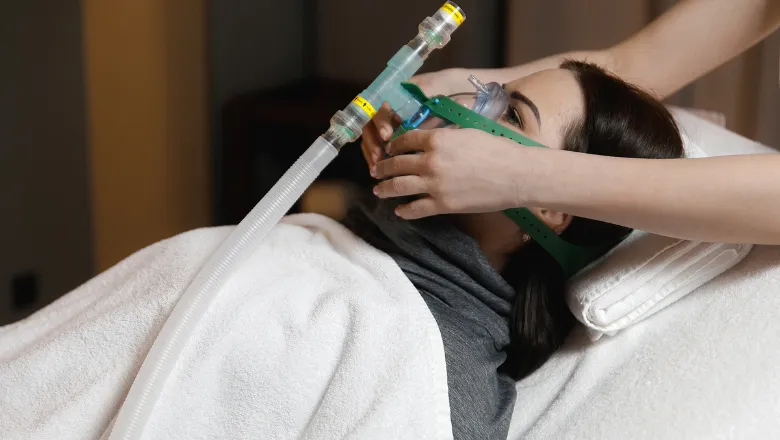“We know that athletes can use hypoxic canopies over their bed to simulate altitude exposure and that altitude can induce performance benefits after two to three weeks even in people who are extremely fit. We were interested in whether this approach could also benefit older patients ahead of major surgery, who due to sedentary lifestyles and low levels of fitness, are more at risk of negative postoperative outcomes.
Lead author Professor Thomas Smith, a Consultant Anaesthetist and Head of Aerospace Medicine Research at King's
30 November 2023
High altitude training shows promise for patients ahead of surgery
Simulated high altitude could help older patients at risk of health complications related to surgery, a new study has found.

A randomised trial of eight volunteers spent a week exposed to reduced oxygen levels that simulated high altitude in a residential hypoxia facility, to see if breathing less oxygen could benefit their physical health.
The study was conducted by researchers from King's College London, Royal Melbourne Hospital, Oxford University Hospitals NHS Foundation Trust, Beth Israel Deaconess Medical Center and the University of Limerick.
Many patients waiting to have major surgery have low levels of fitness, high BMI, sedentary lifestyles or anaemia, which are associated with higher rates of complications and deaths after surgery. Anaesthetists are currently trying to develop more effective means of improving patients' fitness before operations, known as prehabilitation, to reduce this possibility.
Altitude training is known to improve fitness and lead to higher blood levels (haemoglobin, which carries oxygen in the body) in athletes through exposure to reduced oxygen levels (hypoxia), which are similar to the conditions passengers experience during an airline flight. In athletes, a low-oxygen environment stimulates an increase in haemoglobin to carry more oxygen throughout the body, enabling them to perform better in low-altitude environments.
Researchers questioned whether exposure to simulated high altitude could benefit older people who face a risk of complications ahead of surgery, introducing the concept of ‘altitude prehabilitation’. To test this, they recruited eight sedentary volunteers with an average age of 64 to spend two weeks living in the National Altitude Training Centre in Ireland, a ‘hypoxic house’ in which oxygen levels in the air are tightly controlled.
During one week, the house contained normal air, while during the other week the oxygen levels were mildly reduced (similar to conditions during an airline flight, equivalent to approximately 2438 m or 8000 ft). Volunteers underwent cardiopulmonary exercise tests before and after each week-long exposure.
The researchers found that simulated high altitude stimulated a large increase in haemoglobin in participants but led to no major changes in their aerobic fitness. This increase in haemoglobin could be clinically beneficial ahead of surgery.
In practice, small scale hypoxic canopies could be provided to patients to use while sleeping for the weeks leading up to their surgery. The use of hypoxic technology is also already widespread, as hypoxic rooms or tents are available at high-end gyms and in professional sports clubs, and similar hypoxic air systems are used to prevent fires on an industrial scale, such as in warehouses and library archives. In healthcare settings, hospitals could create small or large hypoxic spaces for patients ahead of surgery, as the technology is available.
“Whilst this study suggests that simulated altitude exposure may have potential advantages for older and sedentary patients, further studies are needed to explore this for home-based altitude prehabilitation.”
The article, Potential for using simulated altitude as a means of prehabilitation: a physiology study, is published in Anaesthesia.
